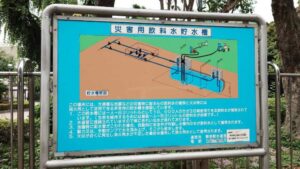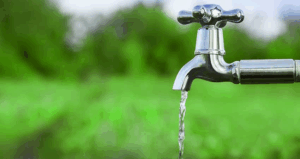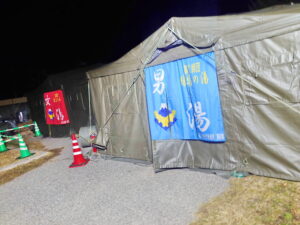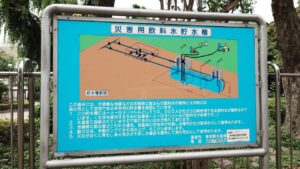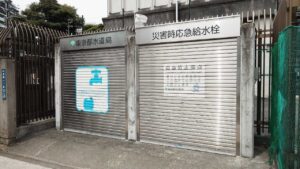For those of us living in major cities, one of the most critical disaster threats following an earthquake is a “large-scale fire,” particularly “urban conflagrations.” As witnessed during the Great Hanshin-Awaji Earthquake and the Noto Peninsula Earthquake, once a fire breaks out, it can quickly spread and consume entire urban areas. But have we truly prepared ourselves for such a risk?
If a fire breaks out in your city, flames could reach your location within five minutes. We cannot afford to ignore this possibility—we must prepare for such scenarios now.
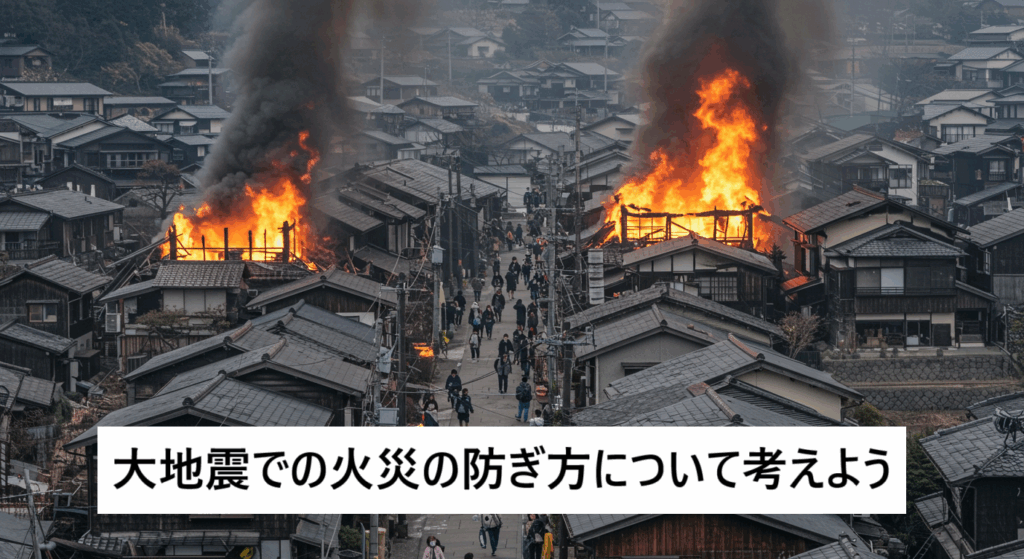
Introduction: Fire Multiplies the Impact of Disaster
In addition to the direct damage caused by seismic shaking, large cities face a heightened risk when earthquakes are followed by power outages and water supply disruptions. These conditions can turn small fires into massive infernos. It’s a multiplying effect—disaster factors combine to intensify fire hazards dramatically.
For instance, during the Great Hanshin-Awaji Earthquake, there were 285 simultaneous fires. This scale far exceeded firefighting capacity. In a Tokyo-based shelter-in-place simulation, it’s estimated that up to 6,100 fires could break out simultaneously, while fire department coverage may reach only 16%. With just 1,000 fire engines deployable, this paints a dire picture.
However, with awareness and preparedness during earthquakes, we can significantly reduce these fire risks. The following content provides guidance—let’s explore fire prevention measures together.
1. Phase 1: 0–60 Minutes — Everyday Ignitions Turn Deadly
The first 60 minutes after a disaster are crucial—the window where initial fire suppression can make the difference between safety and catastrophe. During this phase, fires originating from everyday activities are most likely to escalate due to the earthquake.
The primary causes include cooking fires and kerosene heaters. The quake may topple stoves or tip over heaters, igniting flames. In aging communities, this can quickly lead to delayed ignition and structural collapses, dramatically increasing the chance of widespread fires.
Initial suppression at this stage is vital. If a fire breaks out at home, stay calm and attempt first response firefighting using extinguishers or leftover bathwater. Also, check any lithium-ion batteries you own—if they were damaged by falling furniture, they may ignite after a delay.
Immediately after an earthquake, first check your surroundings for any signs of fire—stay calm and inspect carefully.
2. Phase 2: 1–12 Hours — Aftershocks and Forgotten Flames
Between one and twelve hours after the disaster, the main threats are “rekindled fires” that reignite after initial suppression and evacuation, as well as “forgotten flames” caused by overlooking active heat sources in the chaos.
Data from the 1995 Hanshin-Awaji Earthquake shows that around 24% of total fires were rekindled blazes. Meanwhile, aftershocks can cause buildings or furniture to collapse, triggering new fire hazards that may have been missed during evacuation.
During this phase, not only individual awareness but also community announcements and public alerts are key to preventing overlooked fires. Before evacuating your home or workplace, check that all heat sources are fully turned off and, as a rule, switch off your circuit breaker before leaving.
3. Phase 3: Recovery Period — Power Restoration & Gas Reconnection Fires
From 72 hours after the disaster onward, and throughout the months-long recovery period, unexpected fire hazards such as “electrical fires during power restoration” and “gas reconnection fires” become increasingly common.
- Electrical Fires: These occur when power is restored after an outage, and damaged cords or toppled appliances short-circuit and ignite. During the Great East Japan Earthquake, 286 such incidents were reported.
- Gas Reconnection Fires: If gas pipes are damaged and gas is restored without proper checks, leaks can occur and lead to ignition. In the Kumamoto Earthquake, 51 such fires were reported following gas restoration.
To prevent such fires, it is essential to turn off the circuit breaker before evacuating. When electricity or gas service resumes, announcements will be made through disaster broadcasts or local officials—reconnect utilities carefully and only under professional guidance.
4. Other Sources of Fire Risk
In addition to the above three phases, there are other fire risks specific to urban disaster conditions.
- Overheating of Solar Panels: Damaged solar panels may overheat and cause fires. Please take extra caution if your home is equipped with them.
- Heat from Generator Exhaust or Arson: The use of portable generators during power outages increases, but their exhaust heat may ignite flammable items. Arson in the confusion of a disaster is also a risk to be aware of.
Take proper precautions to minimize the risk posed by these potential sources of ignition.
5. Three Major Case Studies: Lessons from Urban Disasters
Major urban disasters in the past have shown how devastating fires can be in post-earthquake scenarios.

From these incidents, we learn that a combination of factors—including the number of destroyed buildings, limited firefighting capacity, and wind speeds—can all intensify fire damage. Particularly in wooden residential areas with strong winds, fires can easily spiral out of control.
6. Seven Steps You Can Take (Early Firefighting & Survival Strategy)
What steps can we take to protect ourselves from fire risks in cities? Here are seven actions individuals can take:
- Install a Seismic Breaker: Automatically cuts power after an earthquake to prevent electrical fires. (Cost: approx. ¥2,000 / Time: ~10 minutes)
- Own a Fire Extinguisher: A must-have for first response. Store it in an accessible location. (Cost: up to ¥3,000)
- Prepare Fire Buckets: Store buckets and use bathwater or emergency tanks for fire suppression during water outages. (Cost: up to ¥1,000)
- Practice Evacuation Drills: Use stairs occasionally to confirm evacuation routes and stay physically prepared. (Time: ~10 minutes)
- Locate Nearby Water Sources: During walks or commutes, check where fire hydrants or water tanks are located. Municipal disaster maps can help. (Free / Time: ~20 minutes)
- Talk About Preparedness: Discuss fire safety with neighbors—it helps reinforce community readiness.
7. Three Must-Have Tools You’ll Regret Not Having
Here are three essential tools you should personally prepare for fire suppression and evacuation during disasters:
- Fire Extinguisher (Essential): A compact fire extinguisher suitable for home use. Extremely effective for early fire suppression. [Amazon]
- 15-Liter Bucket: Useful for storing emergency water for firefighting and daily use during water outages. Save leftover bathwater until the next use as an added measure. [Amazon]
- Fire Suppression Spray: A convenient and easy-to-use mini extinguisher. Especially useful for grease fires (e.g., from tempura oil). Prepare one if possible. [Amazon]
Conclusion
Fire risk in urban areas can become catastrophic when combined with earthquakes. However, by extinguishing fires within the first 60 minutes and preventing ignition during the recovery phase, we can drastically reduce the spread of urban fires.

